Desktop 3D printing is generally considered an inoffensive practice and promising technology. But what happens when you can print crucial components for firearms quickly, quietly, and easily in a bedroom or garage?
The matter is controversial and the subject of heated debates across the internet, the media, and political halls, and stems back to the early 2010s and the initial 3D printing bubble.
DIY gun enthusiasts tend to label it “media hysteria” and dismiss any concerns by saying 3D printed guns are the domain of hobbyists; too difficult to make, and too unreliable to fall into the hands of wrongdoers. Conversely, a growing number of articles point to the advancement of the technology over the years, recurring episodes of 3D printed-gun-related violence, and issues of traceability and regulation.
There is an interplay of technical, social, political, and legal aspects to consider when delving into the subject. This article gives an overview on the topic of 3D printed firearms, presenting the history, key events, communities, cultures, and facets that make this a timely and complicated matter.
History
Homemade Firearms
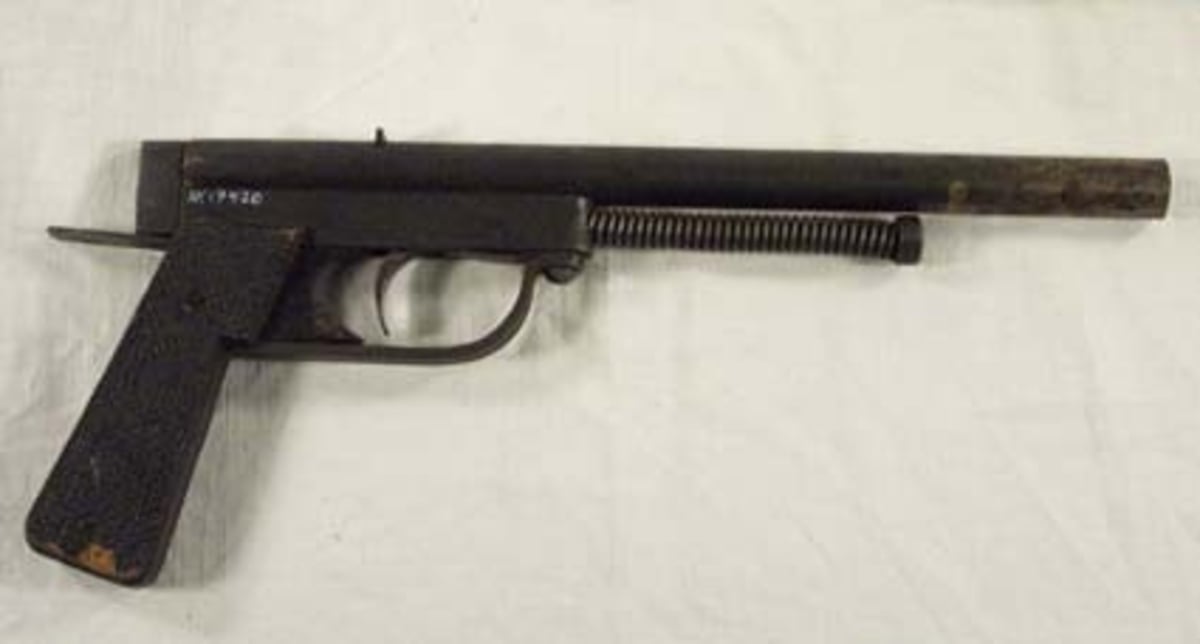
The history of homemade firearms goes as far back as conventional guns themselves. Since the invention of gunpowder, improvised replicas of conventional arms and weapons that vaguely resembled guns have been put together from scraps and repurposed materials. In recent history, firearms of this kind found use by resistance groups in armed guerrilla conflicts during the Second World War and, more recently, by insurgent forces in Iraq, Syria, and Yemen. After World War II, rudimentary firearms known as “zip guns” – simple designs using wooden handles, rubber bands as triggers, and weak tubing – became widespread in the US.
Today, the internet makes it easy to share instructions and designs for DIY gun-making. It consolidated an already strong gun culture, especially in the US, and paved the way for new and inventive methods to create a firearm in your garage, with no more than basic technical skills and a few carpentry tools.
The advent of home 3D printing found an engaged community of gun-makers ready to leverage the technology.
The Advent of 3D Printing
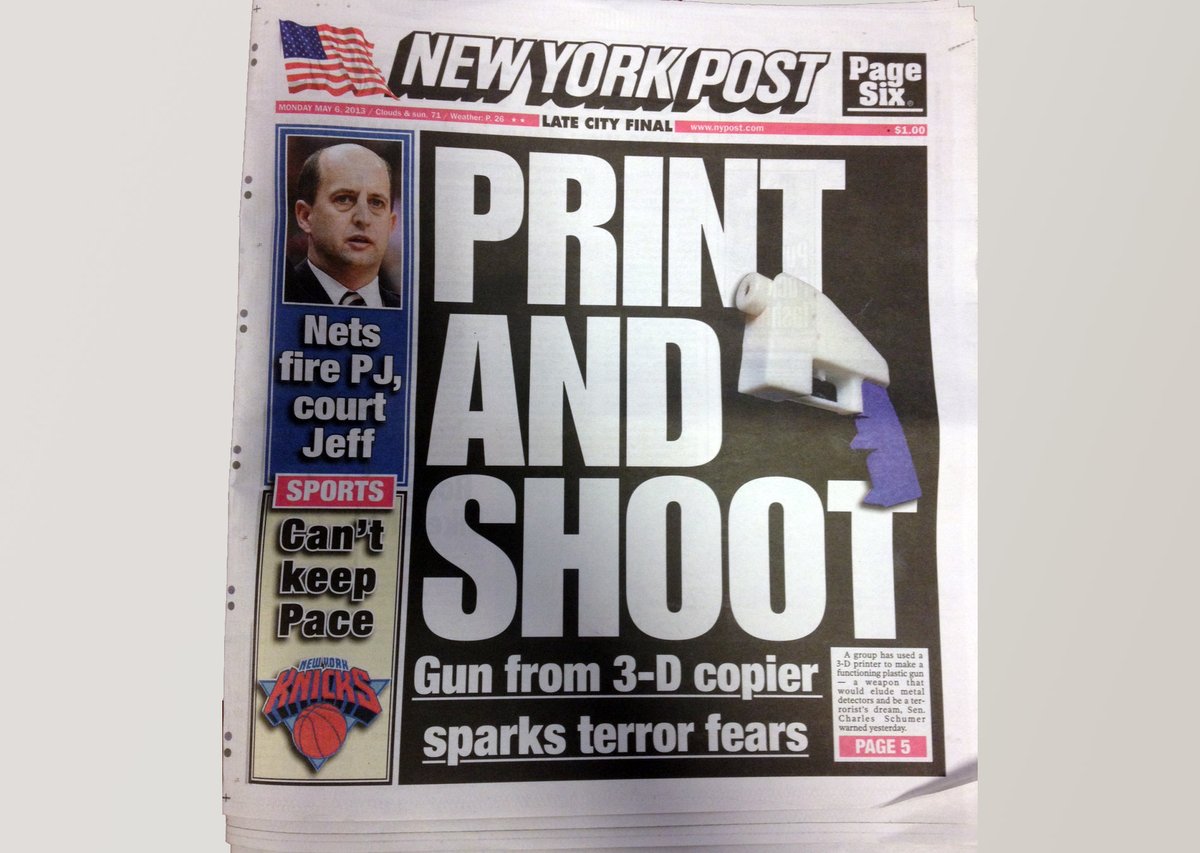
As 3D printing gained popularity in the early 2000s and desktop 3D printers became more affordable, new possibilities emerged for do-it-yourself enthusiasts. Private owners of the first 3D printing machines were able to access CAD files and print simple objects from a variety of plastics. Amid this new wave of 3D printed creations, the first models for firearms and firearm components in polymers began to pop up. However, it wasn’t until 2013 that the first fully functioning 3D printed gun, the notorious Liberator, made its appearance.
The Liberator is a single-shot, polymer-based pistol created by Cody Wilson, founder of Defense Distributed, and published on the company’s open-source file repository, DefCad, in May 2013. The gun’s publication came in reaction to Makerbot Industries removing firearm blueprints from its popular 3D model repository, Thingiverse, late in 2012.
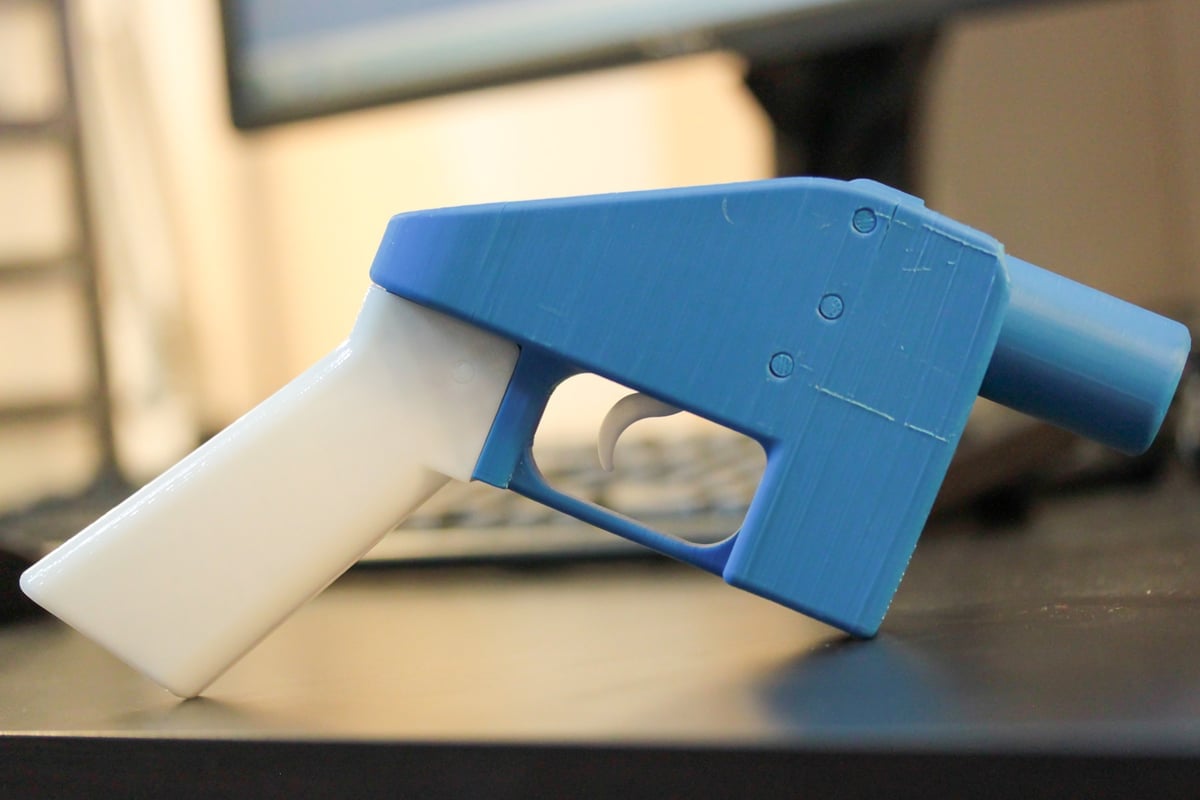
The same year that the Liberator ignited a fiery debate about 3D printed guns, additive manufacturing company Solid Concepts printed what’s thought to be the first industrially manufactured gun. Made from Inconel using the DMLS (Direct Metal Laser Sintering) printing process, the gun is called the 1911 DMLS and is a replica of the Colt Government Model 1911.
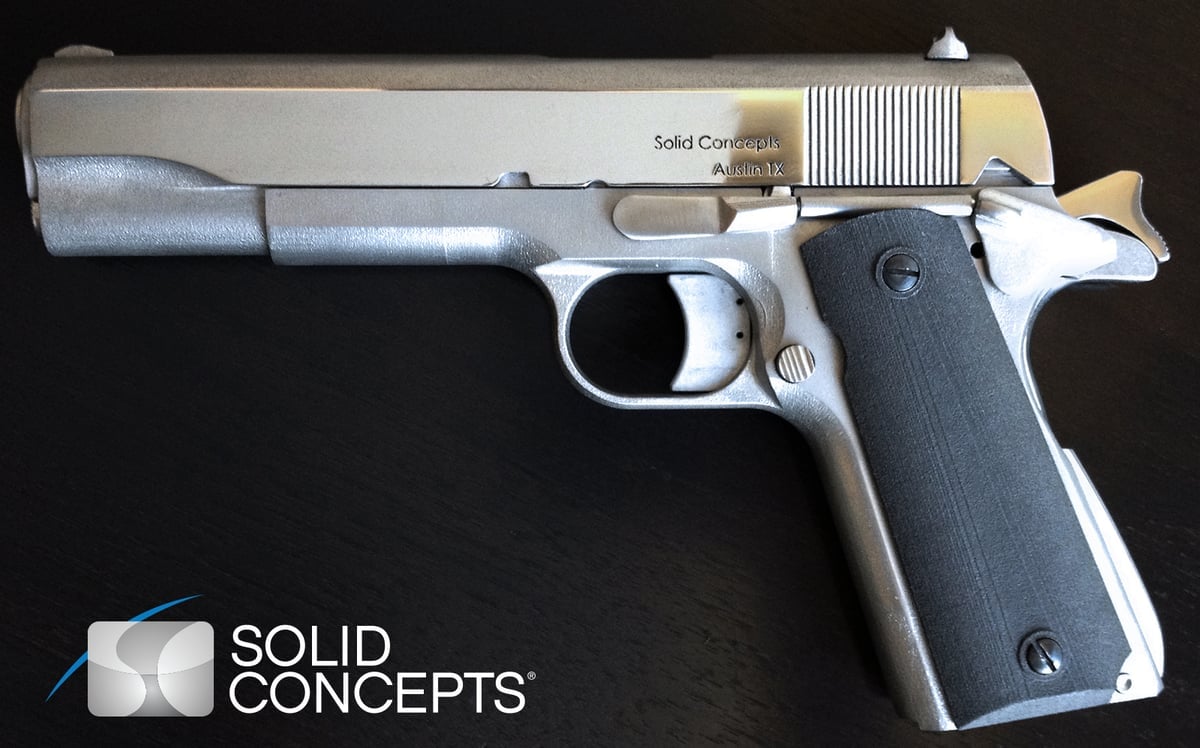
Inspired by Wilson, several advocacy groups have emerged, sharing designs for 3D printed guns on forums and social media. Groups like Deterrence Dispensed and Fosscad foster thousands-strong communities that publish new and improved gun designs, including sub-machine guns and rifles. From the simple single-shot Liberator, today it is possible to print semi-automatic firearms such as the FGC-9 (Fuck Gun Control-9) by Deterrence Dispensed or the Scz0rpion by Are We Cool Yet.
In 2021, improved and reliable designs such as the FGC-9 were seen in the hands of guerrilla fighters in Myanmar, possibly making them the first 3D printed firearms used in an armed conflict.
Industrial & Military Applications
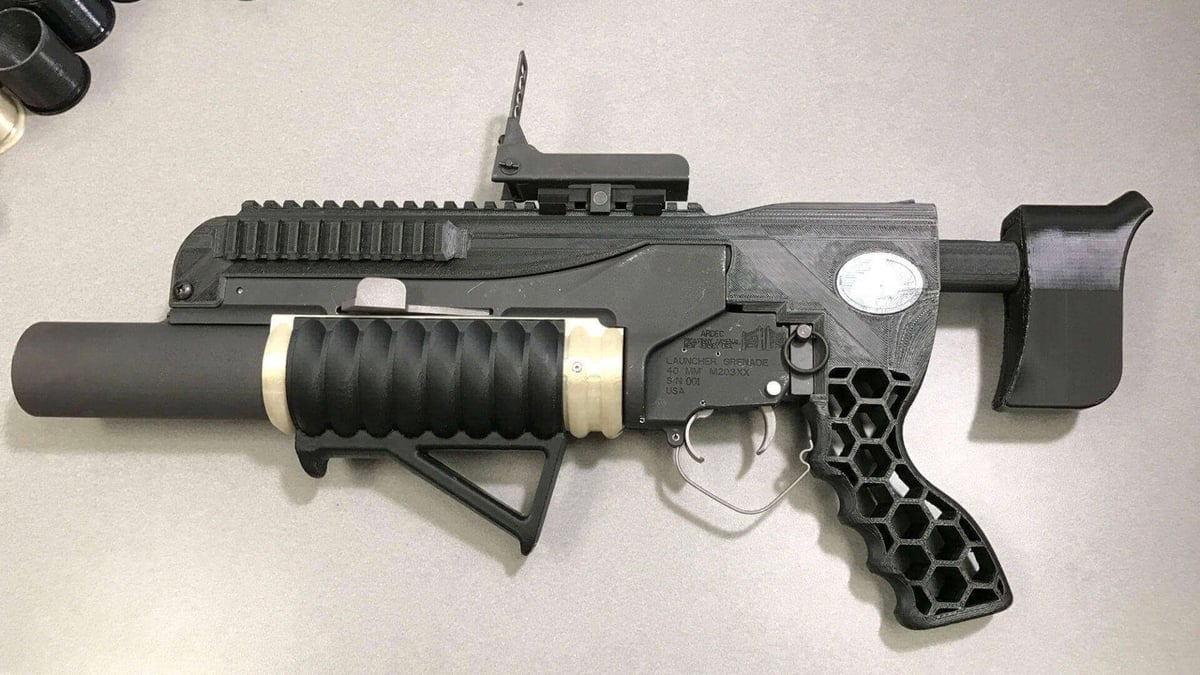
Like many others in manufacturing, the firearms and military industries have picked up on the advantages that additive manufacturing offers. It is not uncommon to find that guns produced by major manufacturers carry components made using industrial additive manufacturing systems.
Outside of conventional production, 3D printing has a role in the field and other “active” environments.
In 2019, the US Army experimented with a 3D printed grenade launcher system called RAMBO (Rapid Additively Manufactured Ballistic Ordnance). Firing 40 mm 3D printed grenades, RAMBO is modeled on the army’s M203 grenade launcher and demonstrates how rapid, localized production could bridge or replace traditional supply chains.
Covid-19: (Short) Supply & Demand
During the COVID-19 pandemic, the number of people engaged in making DIY guns in the US is thought to have boomed. The parts to make guns at home have been sold in great amounts in America, resulting in short supply.
Some maintain the increase in demand is a consequence of the Biden administration’s efforts to enforce stricter regulations on homemade firearms. While difficult to pinpoint, there could also be a shift in the national mood.
The perceived urgency to prepare for armed conflict (also referred to as a “bunker mentality”) is certainly a part of it – one of the myriad reasons exacerbated by the pandemic and its pressures on global and societal norms.
What is a 3D Printed Gun?
Types & Models
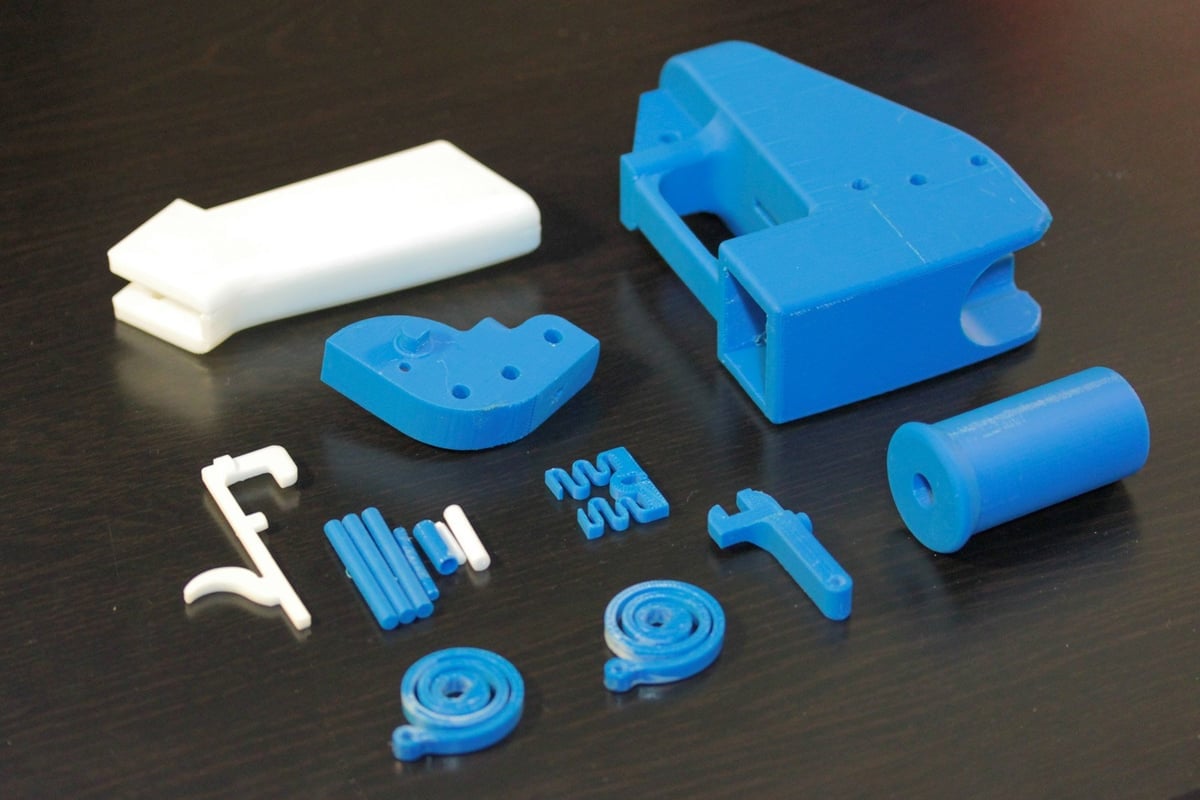
A 3D printed gun is in part or entirely manufactured with a 3D printer. There are three types of 3D printed firearms: fully 3D printed (F3DP), hybrids, and parts kit completions (or parts kit conversions – both abbreviate as ‘PKC.’)
Some firearms, like the Liberator, can be made almost entirely with a 3D printer. These fully 3D printed models are, as the term suggests, virtually all plastic from printed components. They may use negligible household objects such as a nail as a firing pin and an elastic band to drive it, but all pressure-bearing parts are printed. Because of this, it’s thought that they’re of limited use and predictably break after some small number of shots, if even that many.
Following the Liberator, a few F3DP models have gained widespread attention, such as the Songbird, the Washbear, and the ZigZag.
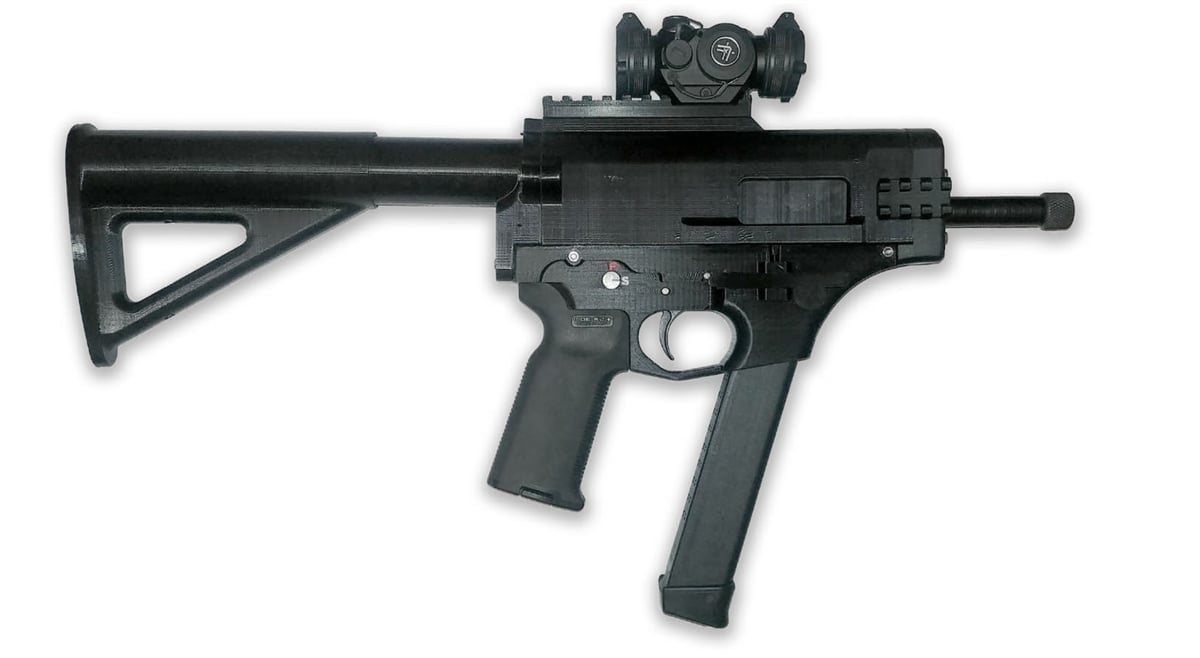
Parts kit completions are kits that make use of ready-to-use or near-ready-to-use parts and require the user to print or acquire the missing components separately.
Some gun retailers in the US specialize in selling kits that do not require 3D printing at all, providing so-called “80% receivers” or “unfinished receivers” instead. These must be completed at home using additional tools, often included in the kit.
What is a "Ghost Gun"?
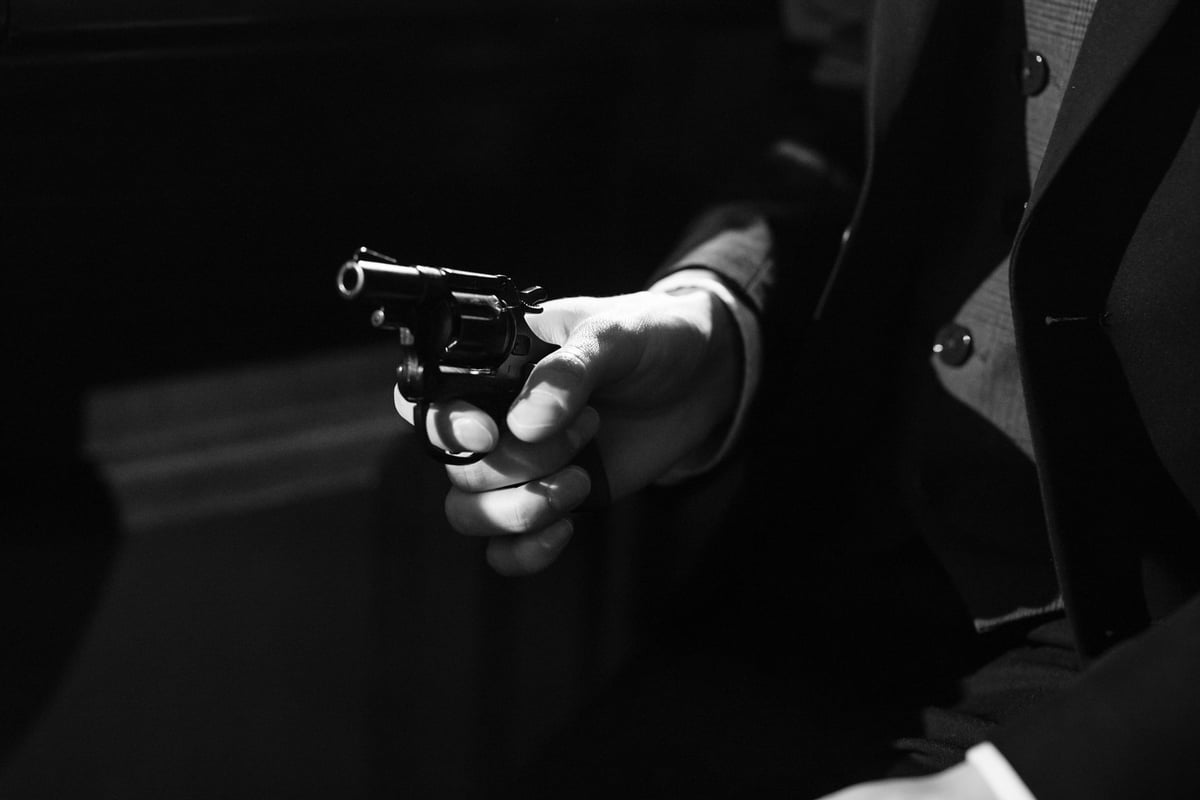
Ghost guns are guns that do not have a serial number and are therefore unmarked and untraceable.
According to the Bureau of Alcohol, Tobacco, Firearms, and Explosives (ATF), in most states of the US, prospective gun owners have to pass a background check and apply for a serial number for the firearm before they can purchase them in-store. While exemptions such as purchases at public gun shows circumvent the ATF check, retailers have explored other ways around this. Until 2022, companies could take advantage of a loophole in the legislation by selling kits with 80% receivers – firearms were subject to regulation only insofar as they featured a completed receiver. As a result, such PKCs could be sold and bought without being subject to federal law.
With few exceptions (see The Law section for more on that), all homemade firearms are ghost guns at the point of creation. This means that all 3D printed guns are ghost guns too. Some states in the US compel the registration of such firearms, but ultimately, it was this baked-in lack of traceability that made them such a sensational story for mainstream media.
Many are not serialized and can not be traced; law enforcement can not easily identify them, and because of this, a growing number of ghost guns found their way into the hands of perpetrators and were recovered at the scenes of crimes.
Accessibility is a big draw. Convicted felons, banned from buying a firearm via conventional means, could buy a kit instead and assemble the gun at home with the addition of common hardware-store parts and the aid of a 3D printer.
To prevent further exploitation of this loophole, and in an attempt to curb threats to public safety, the ATF proposed an amendment of the definitions of “firearm frame or receiver”, “complete weapon,” and “privately made firearm”. As of April 2022, the legal meaning includes split receivers and “buy build shoot” kits within the definition of a firearm, compelling manufacturers selling such components to secure licenses and to add serial numbers to each of the pieces. Customer background checks should be carried out before completing any sales, as is already done with other commercially made guns.
Other individual parts, kits, or ghost guns already circulating- including those made by 3D printers – should be serialized prior to sale when landing in the hands of federally licensed dealers or pawn owners.
How to Make a 3D Printed Gun
Technologies
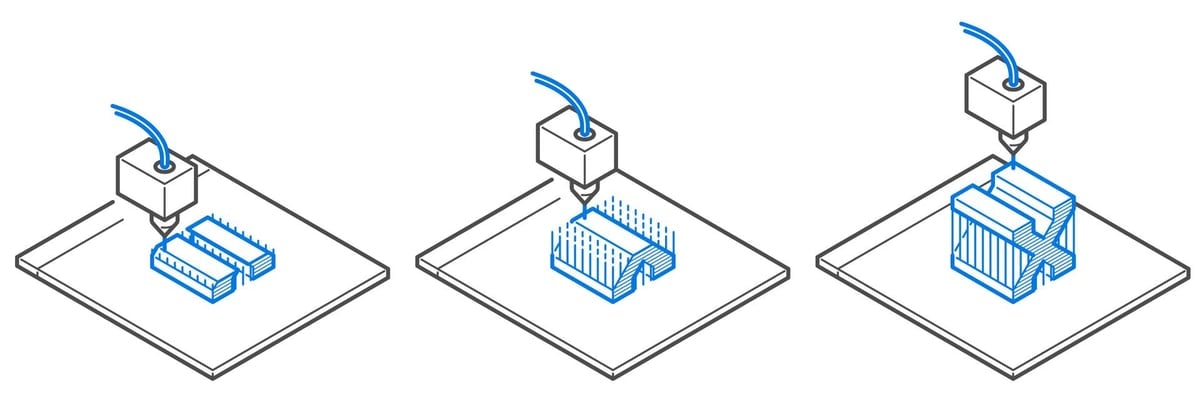
The printed parts of a 3D printed gun can be made using a standard FDM (Fused Deposition Modeling) desktop printer. This technology works by extruding thin plastic lines, building layer upon layer on a build plate until you have a complete 3D model.
In consumer-grade 3D printing, users typically use thermoplastic polymers such as PLA, its tougher variant PLA+, ABS, or PETG. PLA generally is cheap, readily available, but relatively brittle compared to the other materials mentioned.
Engineering-grade materials such as Nylon and polycarbonate are also possible, but they’re difficult to print using today’s prolific and inexpensive consumer-level 3D printers.
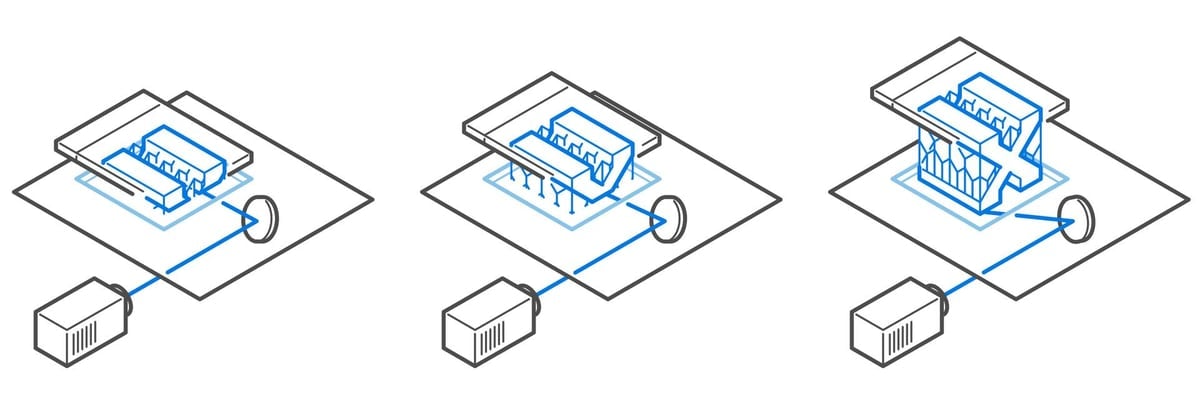
Alternatively, vat polymerization 3D printers use UV light to harden liquid resin photopolymer. Increasingly popular for home 3D printing, the materials are usually quite brittle, although a wider variety is changing this picture in recent years. One advantage vat polymerization holds over FDM prints is homogeneity, with strength in all directions of a print.
The designs that you print can come in many forms. While CAD data and associated file types from design software are possible, typically, users will download models as STL files from the internet or create them themselves. These files are then processed in slicing software (which designates the 2D “slices” for the printer to follow,) resulting in a machine-readable file that you load onto the printer for printing.
3D Printing vs CNC Milling
Historically, basic milling and lathing equipment was all you needed to make a self-made firearm. Machines using computer-controlled motion systems modernized this, with CNC (Computer Numerical Control) milling generally considered more desirable and effective than 3D printing for durable self-made firearms. While 3D printing works by deposing layers of plastic, CNC milling uses software and cutting end mills to carve much tougher materials – usually metal.
Defense Distributed has focused in recent years on refining and selling CNC machines for completing unfinished receivers for automatic rifles. As advertised on the Ghost Gunner website, no prior expertise is required to operate this CNC machine. With its software, the company claims that it allows you to “legally manufacture unserialized rifles and pistols in the comfort and privacy of your home”.
In what it says is a response to the recent efforts of the Biden administration to regulate unfinished receivers, Defense Distributed now offers the “Ghost Gunner 3 Zero Percent kit” that makes it possible to mill an AR-15 receiver from a raw block of aluminum. If attempts to regulate 80% lowers are successful, Defence Distributed claims 3D printing and such CNC machines will be the only legal method in the US for manufacturing an unregistered lower receiver at home (New Jersey excepted, which has stricter state laws).
File Repositories
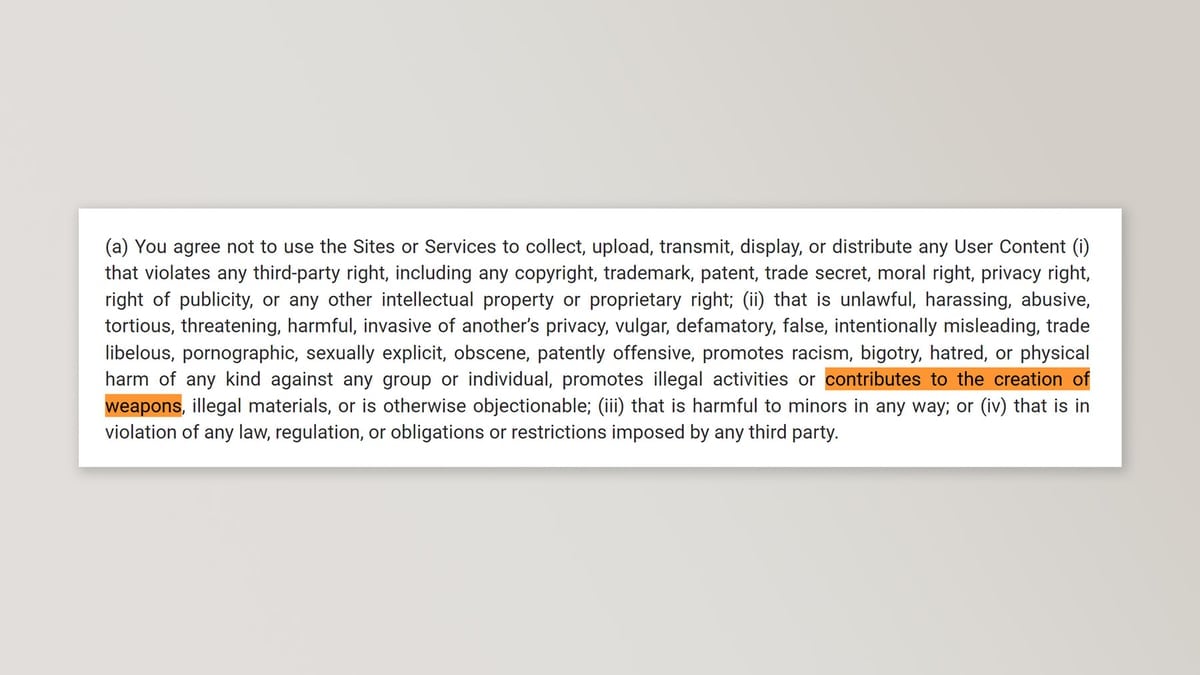
In addition to the general-purpose 3D model repositories, there are popular sites that primarily host the designs for firearms parts. Possibly the most well-known, likely due to Wilson and the high-profile legal proceedings against him, is DefCad.
Users that pay its annual membership fee get access to a breadth of CAD files for download and then printing or milling. Gun files are available on other selected 3D printing-related repositories, though geography and policy dictate how much is tolerated and available on each.
However, many more designs are shared on closed forums and private chat rooms, sometimes backed by blockchain technology, which can decentralize the distribution of blueprints, making them virtually impossible to control.
Open-source gun advocacy group Deterrence Dispensed has been known to share its files via Spee.ch, a hosting site backed by the LBRY blockchain.
Some hosting services censor the designs, prompting firearm-sharing communities to move to new, less scrutinized corners of the Internet and continue sharing their work without regulatory oversight.
A particularly visible case of this is with the encrypted platform Keybase, shortly after it was acquired by videoconferencing giant Zoom. The service was noted for its encryption and respect for privacy before the acquisition, booting homemade gun enthusiast communities from the platform in December 2020 as its policies aligned with its new parent company.
3D Printing Services
Those without access to a 3D printer can turn to a 3D printing service. These businesses typically let you upload a 3D printable file to their platform, generate a quote considering the materials and technologies used to print, and then have the object printed on your behalf.
Since the creation of the printed part is the legally ambiguous bit, 3D printing service providers vary on whether or not they accept jobs printing gun parts.
Notable 3D printing services Materialise and Sculpteo made it clear that they reserve the right to reject jobs, including the printing of gun parts, as it conflicts with their values.
A representative from Craftcloud, All3DP’s 3D printing marketplace, gave the following statement for the service’s part policy:
“Since we do not always know the purpose of the designs ordered on our service, we can also not always be an accurate judge of its intended use. However, we obligate every customer on our service, as they sign the T&C’s of our platform, that they do not request a print for ill-use or to cause any harm or damage.”
Who Uses 3D Printed Guns?
Hobbyists, Anarchists, FoS & Second Amendment Advocates
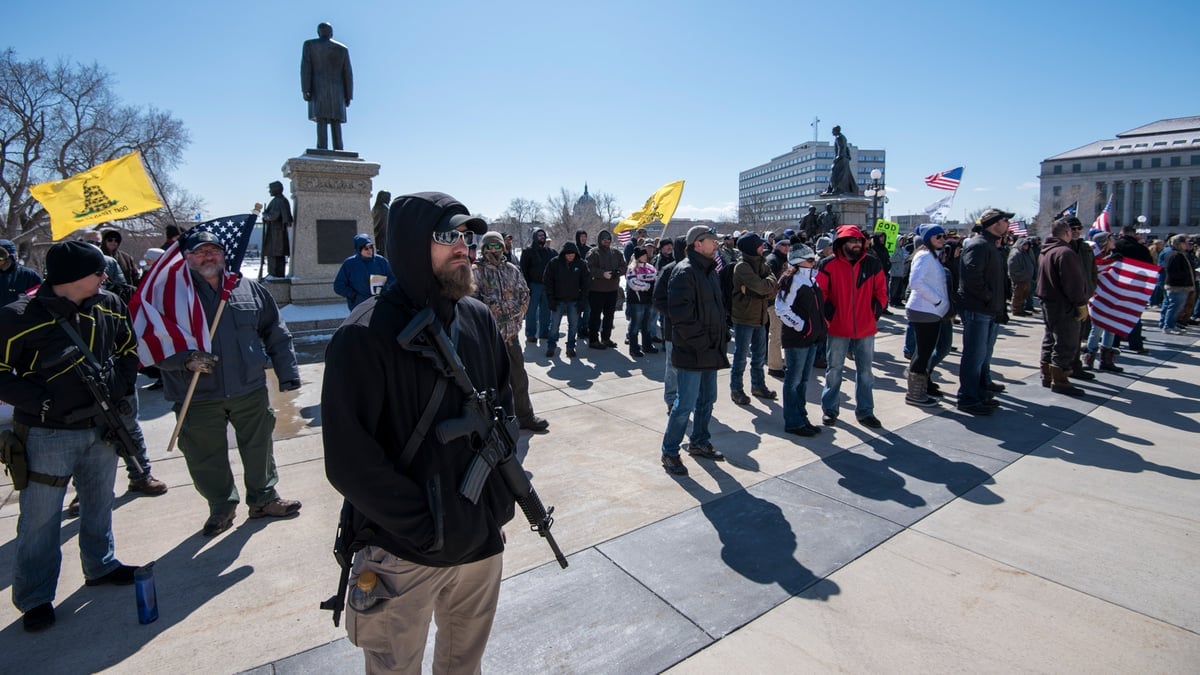
The design and manufacture of guns using 3D printing technology appear to be a contact point between two cultures.
On the one hand, we have hobbyists: technophiles and engineering buffs who love to experiment with new technologies and self-sufficiency in designing and creating the objects they use. Here, a printed gun could be considered an object of design and expression.
There are now 3D printed gun competitions that further this aspect of the hobby. The National Gun Maker’s Match, founded in 2021 and held in Florida, gained widespread attention after featuring prominently in a Vice short documentary (link below) on the subject.
Are We Cool Yet maintains that its guns are works of art and are protected not only by the Second Amendment (as “Arms”) but by the First Amendment, too. Wilson successfully used this argument to defend his and DefCad’s publication of designs, closing a three-year-long lawsuit in 2018.
On the other hand, some groups see 3D printed firearms less as an artistic expression, and more as a fundamental right and activistic tool.
Wilson describes himself as a crypto-anarchist and is a fierce Second Amendment advocate. Many active 3D printed gun community members pair their passion for DIY with fervent political beliefs. Communities Deterrence Dispensed and Defense Distributed promote themselves with Second Amendment-aligned slogans such as “Come and Take It,” “Live Free or Die,” and “Free Men Don’t Ask,” and are overt about their intent to oppose gun control and arm themselves in view of a rebellion against the federal government.
Criminals & Extremists
Criminals and violent extremists have also been known to seek 3D printing technology and blueprints to acquire undetectable firearms. A leaked report from the Joint Counterterrorism Assessment Team notes two occasions in 2020 and 2021 when gun files and privately manufactured machine gun parts ended up in the hands of racially-motivated extremists. Wired points to the purchase of illegal gun parts online by the so-called Boogaloo, a group described by the Institute of Strategic Dialogue as an “anti-government, anti-law enforcement extremist militia movement.”
Other high-profile instances of 3D printed firearms coming to light in criminality include discovering a workshop of 3D printed guns and white supremacist material in Tenerife, Spain, in 2021, plus the Halle Synagogue shooting (German) in Germany in 2019.
The Law
United States
Under the Gun Control Act of 1968, although it is illegal to sell homemade firearms without a license, it is not illegal to manufacture and own homemade guns.
Attempts to amend this regulation, including reclassifying “80%” or “unfinished” receivers to fall under the definition of a firearm, as stated in above sections of this article have been concluded.
Further amendments include the regulation of stabilizing braces, parts that can turn untraceable pistols into untraceable short-barrel rifles.
Other federal rules governing homemade firearms include the Undetectable Firearms Act, which requires that every homemade firearm include a minimum of 105 g of metal. This ensures that a metal detector can pick them up.
Even though this is the current situation at the federal level, the laws vary according to state.
Since 2018, it is strictly illegal to buy parts to manufacture an unserialized gun at home in New Jersey. To 3D print a gun, you need a license for manufacturing.
In California, even homemade guns need a serial number. From January 1, 2024, any firearm owner or new resident of the state with a firearm that does not have a valid state or federal serial number or mark of identification should apply for one at the Department of Justice within 60 days after arriving in the state. Makers are expected to apply for a number before manufacturing the gun. Other strict rules about safety apply there, too, including operational safety and the means to imprint identifying marks onto the bullet casings.
Other states have similar laws or are planning to enforce their own restrictions based on the new national legislation amendments.
Europe
Things are quite different in Europe.
Making and owning homemade firearms, including 3D printed guns, is prohibited in EU countries. Beyond such organization-wide legislation, nations apply and enforce their own, more specific regulations. In some parts of Europe, even the possession of 3D printable files for firearms is considered a crime.
In the UK, for example, Home Office Guidelines of Firearm Licensing Law were updated in 2013 to specifically criminalize the manufacture, purchase, and sale of 3D printed guns and gun parts. The first known conviction in the UK for producing a fireable 3D printed gun came in 2018.
Despite all this, the fact that the files are freely available on the Internet makes it difficult to enforce some of these laws. Some draw parallels between the futility of controlling gun designs and attempts to stop the piracy of movies, video games, and other digital material.
Other Notable Legislation
In other parts of the world, some countries pay special attention to the issue of 3D printed guns.
To combat the rise of 3D printed guns, New South Wales, Australia, passed a law equating possession of 3D gun files to actual possession of a 3D printed gun. In 2015, the county amended its firearms act to include a clause that says, “A person must not possess a digital blueprint for the manufacture of a firearm on a 3D printer or on an electronic milling machine… [or face a] maximum penalty: imprisonment for 14 years.”
Some parts of China have also taken extreme measures to monitor and prevent 3D printed guns and other weapons from surfacing. The police in Chongqing require all companies with 3D printers to register themselves as “special industries,” asking for details about the equipment in use, the security measures they have in place, and even information on all employees.
In Singapore, the Arms Offences Act of 1973 stipulates that ” any firearm, airgun, air pistol, automatic gun, automatic pistol and any other kind of gun or pistol from which any shot, bullet or other missile can be discharged”, classifies as an arm. Since a 3D printed gun is none other than that, the possession of one carries a prison sentence; attempted use of a firearm carries the death penalty.
Safety
Do 3D Printed Guns Explode?
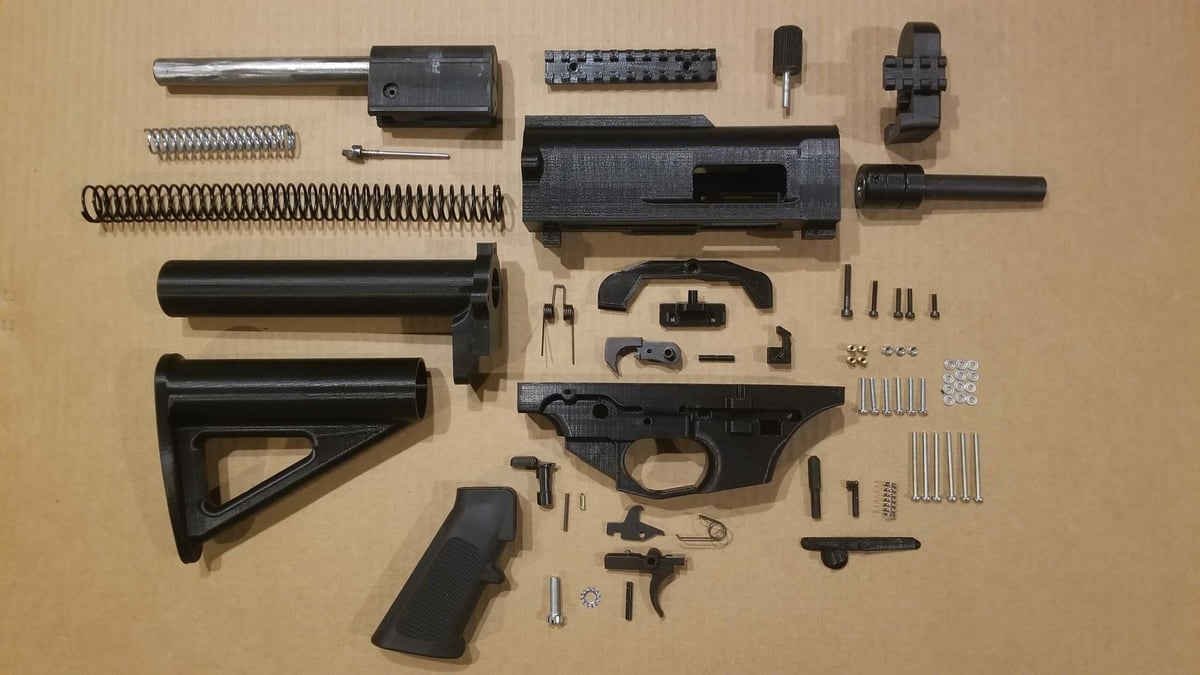
Since the advent of the first models, 3D printed guns have maintained a reputation for jamming, possibly even blowing up in the user’s hand. A popular opinion on the internet is that 3D printed guns are more dangerous for users than others. A 2021 Vice documentary on Ghost Guns shows several malfunctioning self-made guns at the first 3D printed gun competition, but it’s worth noting that the well-built 3D printed examples worked perfectly.
The Halle Synagogue shooter, who captured the crime on camera, could be heard commenting that he had “certainly managed to prove how absurd improvised weapons are” after repeated jams.
Because 3D printed guns are homemade, the proficiency of the firearm will depend on the skill of the builder.
As accessible 3D printing technology improves and the pool of shared knowledge on 3D printing grows, it’s clear that such improvised firearms are becoming increasingly effective.
Some users of the gun- and printing- enthusiast communities have garnered a following for their reliable designs.
Fosscad’s DIY gun enthusiast Derwood is known to produce and share well-functioning models, including the semiautomatic Shuty MP-1. The FGC-9 semiautomatic pistol, designed by JStark1809 of Deterrence Dispenced, is durable and, with the MkII revision of 2021, is now more reliable and easier to build.
Proliferation & Public Safety
In addition to becoming sophisticated and more reliable than ever, 3D printed guns are now also cheaper and easier to manufacture. Co-founder of Deterrence Dispensed, Ivan the Troll, told Slate that the FGC-9 needs no technical expertise to build and is the easiest, cheapest, most accessible, and most reliable semi-automatic DIY firearm he’s aware of. He also said that someone with experience could make an FGC-9 in a week or less, while a motivated novice could take as little as two weeks. Just $200 today will comfortably buy a 3D printer capable of such prints, plus spools of material.
The advancements and greater accessibility of the technology have caused concerns over the possibility that 3D printed guns might be misused. A popular counterclaim from 3D printed gun supporters is that it would be far easier for a criminal to acquire a gun illegally in the streets or on the black market. At the same time, criminals are reportedly taking advantage of the reduced prices, lower barrier to entry of the technology, and improved and freely accessible designs. Some statistics show that ghost gun-related crimes are rising in America, with a fact sheet produced by the Policing Institute noting an increase in some areas. It should be noted, however, that it is not entirely clear just how many of these ghost guns are 3D printed.
The same institute also acknowledges inconsistencies in how law enforcement agencies collect and collate their data on ghost guns, making it difficult to paint an accurate, nationwide picture of the reality of ghost gun recovery in crime.
Public safety threats related to 3D printed guns are a sensitive topic in countries with stricter or non-existent public ownership of firearms. Growth in 3D printing technology provides a new and accessible tool that can be used by those with ill intentions to bypass gun laws and manufacture illegal weapons that would otherwise be difficult to acquire.
Attempts to prevent 3D printed guns from falling into the wrong hands are further hindered by the controversial nature of enacting laws that might be considered an infringement on freedom of speech and the near impossibility of regulating the spread of information on the internet.
What Next?
As a byproduct of a manufacturing technology proven to have many beneficial applications, it will never be an easy task to regulate 3D printed firearms.
While it might not be possible or desirable to hamper progress, it is crucial to view technological advancements in the larger context of the existing cultures they affect and become a part of. Therefore, we should consider the subject of 3D printed guns at the intersection of internet DIY culture and gun culture and the social, legal, and political intricacies that result from ease of access and the sharing of potentially dangerous information online.
There will continue to be sensational stories of 3D printed firearms used in crime and conflict. Enthusiasts will continue to perfect and show off their designs. Law-makers in some parts of the world, certainly in the US, will continue to wrestle with how to entangle the technological and cultural aspects of 3D printed, self-made firearms with existing legislation. Regardless of whether they achieve this or not, people will keep 3D printing guns anyway.
Lead image source: cottonbro, via Pexels
License: The text of "3D Printed Guns: Origins, Legality, Types & Status" by All3DP is licensed under a Creative Commons Attribution 4.0 International License.
